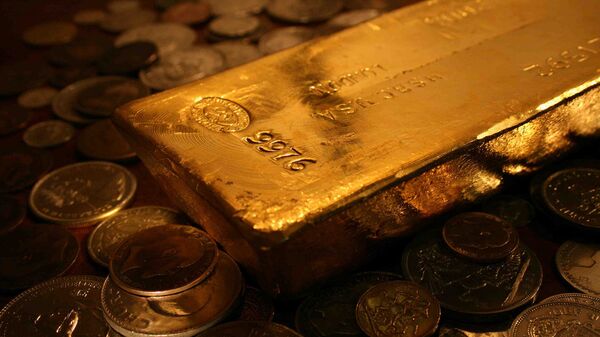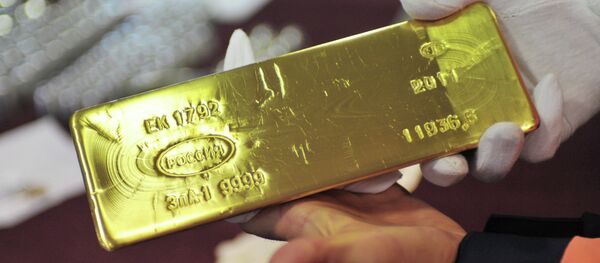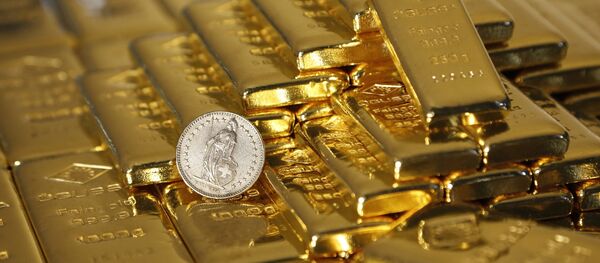Gold has always been regarded as a secure haven for wealth and has played an insurance role in portfolios.
"Gold has always played an insurance role in portfolios — against global disaster, geopolitical meltdown or inflation," Manhattan-based financial writer Michael Brush writes in his article for MarketWatch.com.
Brush notes that now gold is seen as an insurance "against the possibility that central bankers will not be able to unwind all of their debt without creating big problems," and envisions that the precious metal will go higher.
"Several gold investors who have enjoyed the ride so far believe the next move is up from here — possibly even taking out prior highs for the metal," the financial writer stresses.
James Rickards, a lawyer, author, economist and editor of Strategic Intelligence, echoes Brush's stance in his analysis for The Telegraph.
While the monetary elites insisted for years that gold was out of fashion, a "scramble for gold has begun," he writes.
He recalls that in 1933 US President Franklin Roosevelt issued an order making gold ownership a crime, while in 1971 President Richard Nixon brought an end to convertibility of US dollars into gold.
Then, in 1973 the International Monetary Fund (IMF) and G7 nations "demonetized" gold; furthermore, they were no longer required to hold physical gold in their vaults.
"Gold was now just another commodity. The view of the monetary elites was that gold was dead. Yet, like Banquo's ghost, gold insists on its seat at the monetary table," Rickards underscores.
What do we see now?
"After decades as net sellers of gold, central banks became net buyers in 2010," the economist notes, emphasizing, that countries are accumulating the precious metal.
In this context the recent scandal over the manipulation of gold and silver prices by reputable Western financial institutions looks especially sinister.
So, why has gold caught its second wind?
As Brush and Rickards note, central banks are trying to protect themselves from the US dollar inflation.
But it's only half the story: some experts believe that there is trouble brewing for global economy.
In late December 2015 Lord Jacob Rothschild warned his investors that market conditions are deteriorating. "So much so that the wind is certainly not behind us; indeed we may well be in the eye of a storm," Rothschild wrote in an annual RIT Capital Partners' report.
Indeed, in his recent book 'The New Case for Gold' Rickards argues that the world may soon face the international monetary system collapse. According to the economist, the system collapsed three times during the twentieth century — in 1914, 1939 and 1971 — and was teetering on the brink in 1998 and 2008.
"Since today's international monetary system is largely based on the US dollar, a new collapse will be triggered by a collapse of confidence in the dollar and its role as a store of value. It may be surprising, but such collapses do happen every thirty years or so," he wrote.
The economist drew attention to the fact that each time the system collapsed major economic powers teamed up to write new rules: like it was at Genoa in 1922, in Bretton Woods in 1944 and at the Smithsonian Institution in 1971. An upgrade to the Smithsonian Agreement was made by the Louvre Accord about 30 years ago.
Following Rickards' logic, we are now at the doorstep of a new upshift.
Perhaps this is why more and more people are turning to physical gold?






